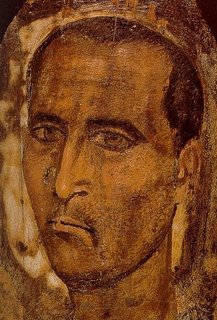Introduction to Christianity Part Two: Jesus Christ, Chapter One
D. The Different Paths taken By Christology
1. Theology of the Incarnation and Theology of the Cross: “Anyone at all familiar with these two great historical forms of Christian self-comprehension will certainly not be tempted to try his hand at a simplifying synthesis. The two fundamental structural forms of ‘Incarnation’ theology and ‘Cross’ theology reveal polarities that cannot be surmounted and combined in a neat synthesis without the loss of the crucial points in each; they must remain present as polarities that mutually correct each other and only by complementing each other point toward the whole.” 230
2. Christology and the Doctrine of Redemption: R takes up Anselm of Canterbury (ca. 1033-1109), in whose theology “it is taken for granted that Christ had to die on the Cross in order to make good the infinite offense that had been committed and in this way to restore the order that had been violated.” According to R, “it cannot be denied, on the other hand, that the perfectly logical divine-cum-human legal system erected by Anselm distorts the perspectives and with its rigid logic can make the image of God appear in a sinister light.” (233)
3. Christ, “The Last Man”: R turns to Teilhard de Chardin as a modern basis for stating that “as an ‘I’ , man is indeed an end, but the whole tendency of his being and of his own existence shows him also to be a creation belonging to a ‘super-I’ that does not blot him out but encompasses him; only such an association can bring out the form of the future man, in which humanity will achieve complete fulfillment of itself.” (239)
1. Theology of the Incarnation and Theology of the Cross: “Anyone at all familiar with these two great historical forms of Christian self-comprehension will certainly not be tempted to try his hand at a simplifying synthesis. The two fundamental structural forms of ‘Incarnation’ theology and ‘Cross’ theology reveal polarities that cannot be surmounted and combined in a neat synthesis without the loss of the crucial points in each; they must remain present as polarities that mutually correct each other and only by complementing each other point toward the whole.” 230
2. Christology and the Doctrine of Redemption: R takes up Anselm of Canterbury (ca. 1033-1109), in whose theology “it is taken for granted that Christ had to die on the Cross in order to make good the infinite offense that had been committed and in this way to restore the order that had been violated.” According to R, “it cannot be denied, on the other hand, that the perfectly logical divine-cum-human legal system erected by Anselm distorts the perspectives and with its rigid logic can make the image of God appear in a sinister light.” (233)
3. Christ, “The Last Man”: R turns to Teilhard de Chardin as a modern basis for stating that “as an ‘I’ , man is indeed an end, but the whole tendency of his being and of his own existence shows him also to be a creation belonging to a ‘super-I’ that does not blot him out but encompasses him; only such an association can bring out the form of the future man, in which humanity will achieve complete fulfillment of itself.” (239)


0 Comments:
Post a Comment
<< Home